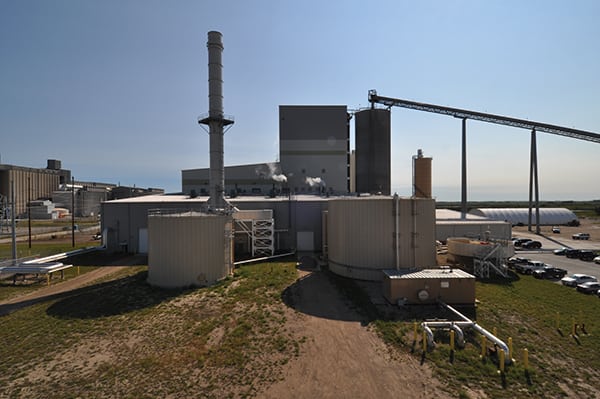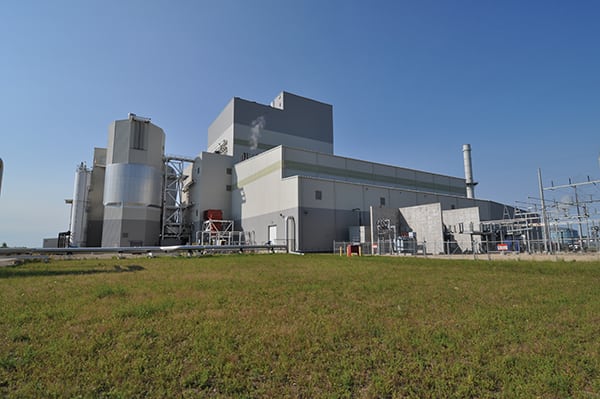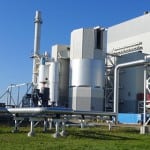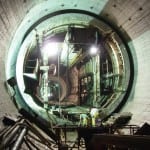Owner/operator: Great River Energy
Recent news has focused on the decline of the coal-fired power industry, but this highly efficient combined heat and power plant offers one template for keeping coal generation viable. Although electricity markets remain challenging, partnering with steam customers can help stabilize revenue.
Combined heat and power (CHP), also known as cogeneration, has been in use in the U.S. for more than 100 years, but many experts believe it is still an underutilized resource. CHP is the simultaneous generation of useful heat and power from a single fuel or energy source at or close to the point of use. CHP captures energy that would normally be lost in power generation and uses it to provide heating and cooling, or process energy, making CHP systems much more efficient.
The Department of Energy says that CHP accounts for about 8% of current U.S. generating capacity. Although that is not significantly lower than the global average of about 10%, the International Energy Agency says CHP has the potential to command a 15% to 20% share of total electricity generation in the U.S. by 2030. But, it suggests that a thoughtful, well-implemented policy intervention is required to facilitate the expansion. Although President Obama signed an Executive Order in August 2012 establishing a national goal of adding 40 GW of CHP capacity by 2020, very little progress toward that goal has been achieved three years later.
A Combined Heat and Power Success Story
However, there is one shining example of new CHP capacity that was added in North Dakota when the Spiritwood Station became fully operational on November 1, 2014. The plant is located about 10 miles east of Jamestown on a 100-acre site adjacent to the Cargill Malt facility (Figure 1) and the Dakota Spirit AgEnergy biorefinery. Spiritwood Station is owned and operated by Great River Energy (GRE) and replicates the success the company has experienced at its Coal Creek Station, which supplies steam to the Blue Flint Ethanol biorefinery for process energy and to dry distillers grains.
 |
| 1. Good neighbors. Spiritwood Station supplies steam to the Cargill Malt facility (visible on the left of this image) and the Dakota Spirit AgEnergy biorefinery. Courtesy: Great River Energy |
Although the plant’s electrical capacity is only 99 MW, the station more than makes up for its small size through high efficiency. According to the U.S. Energy Information Administration, average efficiency for U.S. coal-fired power plants is under 33%, but Spiritwood, with its key industrial partners operating at full capacity, achieves about 60% efficiency. By design, it could reach up to 66% efficiency as more steam users are added, which GRE is actively pursuing.
“The Spiritwood Energy Park is designed with the ability—the land, the rail service, the roads, etcetera—to be able to handle additional industrial installations, and our business development group is working closely with the Jamestown/Stutsman Development group to attract additional partners,” John Weeda, director of North Dakota generation for GRE told POWER. “We have additional steam available, so if some of those partners need steam, we would be glad to provide for their steam needs.”
 |
An In-House Project
Unlike many projects of this magnitude, GRE chose not to use an engineering, procurement, and construction contractor; instead, it handled overall project management in-house. The company hired engineers and worked with them on the procurement process. It also contracted directly for construction management.
“We like that kind of a project. It gave us direct control and involvement,” Weeda said. “One of the benefits we find of that is the transition from construction into your startup phase of the project goes quite well when we take that approach.”
Babcock & Wilcox Power Generation Group Inc. supplied the plant’s boiler, which utilizes internal recirculation circulating fluidized-bed (CFB) technology. Some advantages of this technology include reduced SO2 emissions due to the addition of limestone to the circulating bed, lower NOx emissions as a result of low furnace temperatures and staged combustion, and improved collection efficiency through the use of a two-stage solids collection system.
The boiler is designed for steam flow of 805,000 lb/hr at a pressure of 1,780 psig and temperature of 1,006F. Steam supplied to partner facilities is normally drawn from extraction steam, that is, after the steam has already passed through the high-pressure turbine.
If the turbine were to trip offline unexpectedly, a superheat bypass valve can be opened to allow the boiler to continue supplying the partners. If the boiler trips offline, residual heat in the CFB will continue to supply uninterrupted steam to customers until the plant’s three package boilers—fired by natural gas—are placed in service.
The plant’s steam turbine is a Siemens SST-800, built at the Görlitz turbine manufacturing facility in eastern Germany. The generator was manufactured across the border in Poland.
A Unique Fuel Management Process
The plant is expected to burn about 610,000 tons of lignite coal each year, which will be shipped from the Coal Creek Station after it is dried and refined using the DryFining process. Lignite is a high-moisture fuel. The DryFining process removes moisture, increasing the Btu value per pound, so the plant burns less fuel. It also results in reduced emissions and lower transportation and maintenance costs.
“The DryFining system was one of the reasons that we decided to build Spiritwood Station,” said Weeda, “because we could improve the coal, reduce the moisture, reduce transportation costs, to be able to utilize it at a remote location.”
Coal Creek has eight commercial dryers and one additional dryer specifically intended to dry fuel for Spiritwood. Another benefit of the refining process is that it removes higher-density products, which contain more sulfur and mercury, which helps to reduce emissions.
The fuel is shipped by rail, utilizing about 75 cars. Because the plant was designed with very little onsite storage, 50 cars are used in each trip, with the other 25 remaining at Spiritwood, essentially as a surge volume. When a train arrives at the plant, it is split in half, and 25 cars are dumped. Those cars are then connected to the 25 cars that had remained onsite from the previous delivery, having been dumped in the meantime. The train then heads back to Coal Creek with the empties, leaving the remaining 25 full cars behind to be dumped as silo space allows.
Two railroad companies are involved in the delivery—Dakota, Missouri Valley, and Western (DMVW) Railroad and BNSF Railway Co.—adding a bit of complexity to the task. DMVW makes the trip between Underwood (where the Coal Creek Station is located) and Bismarck, while BNSF handles transit between Bismarck and Spiritwood. “In spite of the fact that we got into commercial operation during the era when a lot of people were losing confidence in the railroad’s ability to deliver on time, they have done a great job for us,” Weeda said.
Challenging but Not Impossible
Every project faces difficulty at some point, and Spiritwood was no exception. The first challenge was weather. “We had at least two really tough winters in a row. We had a lot of rain in the summer. We had a very flat area that we were building in. So, if people talk to you about the biggest challenges, weather comes to the top real quick,” Weeda said.
Finding qualified labor was another challenge. The oil and gas industry is booming in North Dakota, so many qualified workers were already employed in the Bakken region.
Emissions requirements are also challenging. “With a new plant like this, emissions limits are very tight, so it’s an area where we need to put a lot of focus during the operation, but we’re capable of very, very low emissions from the unit,” said Weeda.
Spiritwood Station uses best available control technologies. It has a selective noncatalytic reduction system to reduce NOx emissions, a spray dryer absorber to reduce SO2 emissions, and a baghouse to collect particulate matter.
Trustworthy Partners Required
GRE’s team believes that having a good relationship with its partners was the most important factor in the project’s success. That includes not only the steam partners but also partners in the community. Weeda noted that the City of Jamestown, Stutsman County, Stutsman Rural Water District, and people throughout the region were all very supportive. “You have three expensive facilities that become codependent on each other. You have to have an understanding and contracts in place to ensure that all three businesses can count on a stable future,” Weeda said. “We think that Spiritwood Station is very well positioned to be a long-term resource for this part of the country.” ■
—Aaron Larson is a POWER associate editor.











